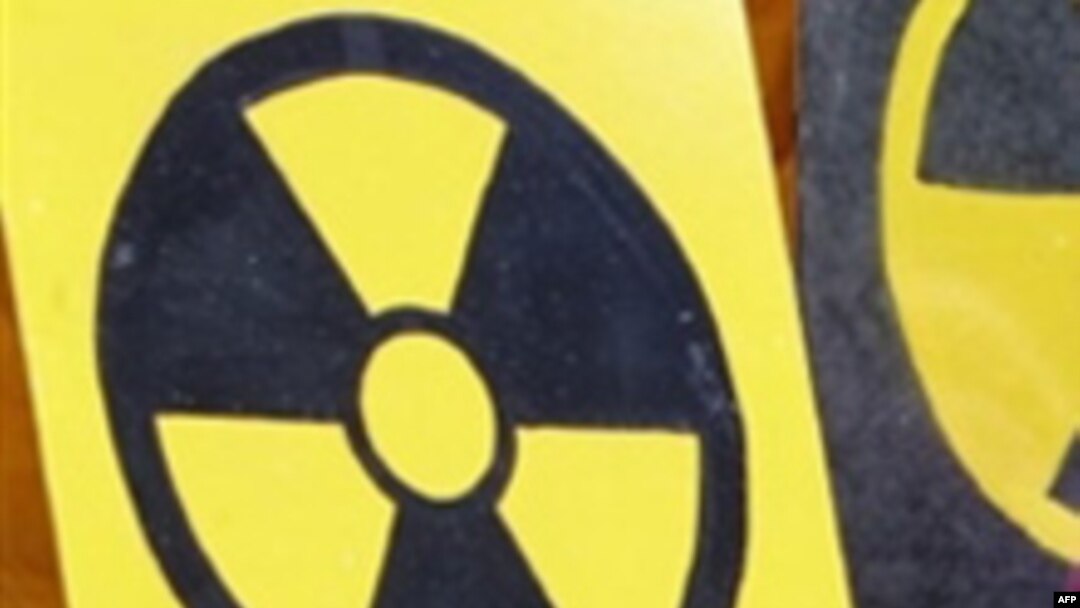On January 9, Kyrgyz officials announced that they had taken possession of a small load of a radioactive substance discovered aboard a train bound for Iran. The material has been placed in a special area in Kyrgyzstan, but questions are being raised about the nature and quantity of the substance, who was behind its transport, and how the train carrying it crossed three border checkpoints before being detected.
While it might simply be a coincidence that the train was bound for Iran, such a destination is also likely to raise eyebrows, given Western concerns over Tehran's nuclear activities and alleged support of terrorism.
Kyrgyz officials are looking for answers, but their behavior has raised questions, too. Why, for example, did it take them nine days to announce the discovery of the material, which was found on December 31 when radiation detectors alerted Uzbek border guards? They promptly sent the train back to Kyrgyzstan.
The Kyrgyz National Security Service continues to decline comment on that and other questions, and Almabek Aitikeev, a departmental head in the Kyrgyz Emergency Situations Ministry, offered only generalities about the quantity of the material when asked by RFE/RL's Kyrgyz Service.
"Not quite a bucketload of radioactive waste material was there mixed in with sand, dust, and snow," Aitikeev said. "We did our work and sealed up the waste on December 31."
Through Three Border Checks
Kubanych Noruzbaev, an official from the Kyrgyz Ecology and Environmental Protection Ministry, said on January 10 that the material was cesium-137, a product of nuclear reactors and weapons testing that is often used in medical devices and gauges. But it could also be used in a crude radioactive explosive device -- a "dirty bomb" -- and underscores the fact that despite some progress since 1991, parts of the former Soviet Union are still littered with sites where lethal radioactive materials remain largely unsecured.
Noruzbaev said the cargo train belonged to a Tajik firm but the cargo was loaded by Kyrgyzstan's state railway company, Temir, in Kyrgyzstan with other material and was bound for Iran. Noruzbaev also questioned how the train made it so far before being detected by Uzbek border guards.
"It passed through our border, the Kyrgyz border [and] it passed through two border checkpoints in Kazakhstan, entering and exiting [Kazakhstan]," Noruzbaev said. "Only on the territory of Uzbekistan was it discovered, and they [the Uzbeks] sent the train back to us."
Noruzbaev said the radioactive material should have been discovered long before the train arrived in Uzbekistan. "But how could it happen that it was not detected when it passed through special checkpoints?" Noruzbaev said. "And even more so, how could a [radioactive] source like cesium-137 or -140 pass [without detection]?"
'You Would Get Burns'
The Kyrgyz news agency 24.kg reported on January 9 that the levels of radiation being emitted from the train car were so high that the Emergency Situations Ministry asked for volunteers to go and unload the cargo. Four people wearing special protective clothing volunteered to venture into the wagon where they discovered the source of the radiation: dust and waste material on the floor, which they swept up and deposited in a bucket. The bucket was then sealed in concrete and stored in a special facility.
Reports say the material emitted 1,000 milliroentgen per hour, which is considered a dangerous level. Most companies handling such material consider 5,000 milliroentgen per 2,000-hour work year to be the "regulatory upper limit" for safety.
"It emits radiation, radioactive waves, and they are harmful, maybe not in mediocre amounts but prolonged exposure," Noruzbaev said. "If you held it a while, depending on the dosage, you would get burns of varying degrees."
But how did the material make it onto the train? In an interview on January 9 with RFE/RL's Kyrgyz Service, Emergency Situations Minister Kamchybek Tashiev was vague. "We established a commission immediately after the information about [the radioactive material] became known," Tashiev said. "The commission arrived at the site and removed the radioactive waste according to the law on radioactive security. In such a way, we took every measure to stop the spread of any radioactive substance among the populace."
Kubat Osmonbetov, a geologist, told RFE/RL's Kyrgyz Service that cesium-137 and cesium-140 are definitely lethal in large doses. Osmonbetov also noted that there is a uranium-processing plant in northern Tajikistan, raising the possibility that the Tajik train in question may have been used in the past to transport radioactive material and that remains of that material had somehow been left in the wagon.
(Amirbek Usmanov of RFE/RL's Kyrgyz Service and Mirosrar Asrorov of RFE/RL's Tajik Service contributed to this report.)
RFE/RL Central Asia Report
SUBSCRIBE For regular news and analysis on all five Central Asian countries by e-mail, subscribe to "RFE/RL Central Asia Report."


